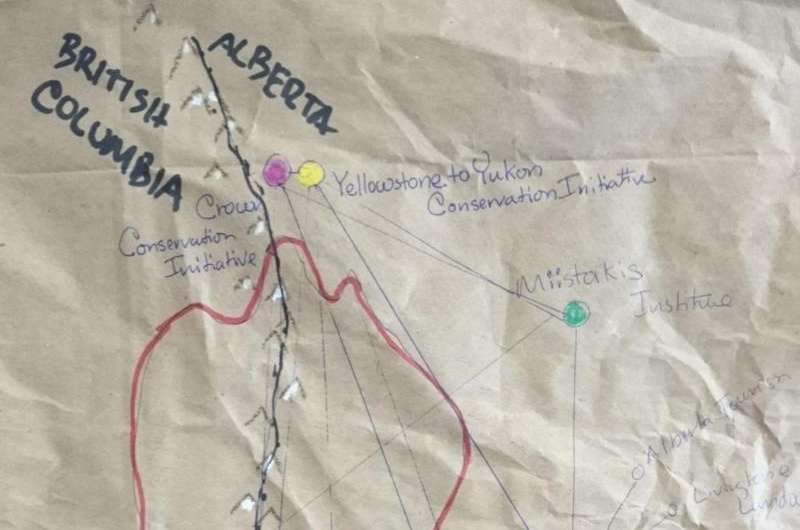Connecting people to solve collective environmental problems

Organizational models known as "network governance" can help big conservation alliances govern themselves, researchers argue in a special April issue of the Ecological Society of America's journal Frontiers in Ecology and the Environment. The Special Issue explores the life cycle of networks, plumbs examples in cities and wilderness, and examines community-based conservation within larger governance networks. Conservation efforts can leverage the problem solving power of stakeholder networks, strengthening connections through communication to facilitate collaboration, cooperation, and accountability, the authors say.
Ecological systems, and ecological problems, are not nicely contained within neat human boundaries. Animals move. Watersheds sprawl across regional and national borders. Wildfire respects neither property, nor sovereignty.
Conservation-minded groups and governments are increasingly attempting to address this reality with large, jurisdiction-spanning conservation programs. But big environmental programs face the additional big problem of coordinating many and varied stakeholders in distant physical, economic, and psychological spaces. In coalitions, no central authority sets goals or enforces performance targets.
"Ultimately, accountability for conservation performance lies with the stakeholders themselves," said Patrick Bixler, a research scientist at Texas A&M University who served as guest editor for the Special Issue along with Lynn Scarlett, global managing director for public policy at The Nature Conservancy, and Matthew McKinney, director of the Center for Natural Resources and Environmental Policy at The University of Montana.
In a network, no one entity is on "top." Networks connect constituent groups without hierarchy, unlike traditional state governments. Networks emphasize inclusivity. Though network governance, disparate stakeholders can envision what they want to achieve together, then choose metrics for measuring progress, improving efficiency by sharing information and coordinating parallel conservation efforts. Networks are flexible, able to link up new constituent groups and release those with waning interests. They can bud off subnetworks to work on problems of specific or local interest.
As consequence of decentralized authority, governance networks struggle with accountability. Hierarchical governance structures enforce compliance with conservation goals through legal or executive mandates. Market-driven governance models motivate individuals towards conservation goals with financial incentives, through instruments like fishery catch shares or carbon cap-and-trade agreements. Self-governed networks have no singular authority that can enforce agreements made by the group as a whole. Networks rely on social connection, trust, and commitment to shared goals to motivate constituent groups to resolve conflicts and adhere to the agreements they have made.
"In some of these landscapes, just getting governments and local communities to communicate at all is a challenge. It takes a lot of work to get to the point where we can worry about performance measures," said Bixler.
Bixler points to the Roundtable on the Crown of the Continent as a success story with lessons for other large conservation efforts. The 18 million acre (44,000 square kilometer) Crown ecosystem follows the Rocky Mountains as they sprawl across northwest Montana, southeast British Columbia, and southwest Alberta. The Crown encompasses private lands, tribal lands, First Nations, and protected areas managed by multiple agencies and local, regional, and national governments in two countries. Over 100 entities manage parts of the system.
"Crown of the Continent is, to my mind, an incredible success story. Communication between tribes, agencies, and other stakeholders built a connective tissue of trust that allowed them to work together to keep certain invasives out of the landscape, connect watersheds across jurisdictions, share data and choose landscape-wide ecological indicators," said Bixler. It sets a really high bar for what I'm looking for when I think about other landscape projects."
Other examples of network governance in action include Chicago Wilderness and America's Longleaf Restoration Initiative.
More information: Lynn Scarlett et al. Connecting people and places: the emerging role of network governance in large landscape conservation, Frontiers in Ecology and the Environment (2016). DOI: 10.1002/fee.1247
Journal information: Frontiers in Ecology and the Environment
Provided by Ecological Society of America


















